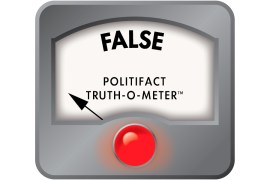American consumers and taxpayers need a fundamental transformation in the organization and incentives in health care financing and delivery. A shift is essential from current cost-unconscious uncoordinated fee-for-service to organized systems, accountable for cost and quality and capable of managing and improving both, that compete to serve cost-conscious consumers. To make access affordable for people who can’t afford it and for the taxpayers who must subsidize them, we must reduce the growth rate of health spending to one that approximates that of the nation’s gross domestic product.
The only cost-reducing reforms supported by evidence are incentives and organization: give individuals a choice of delivery system and the opportunity to keep the savings if they make an economical choice. Successful delivery systems will align provider incentives with consumer needs for high quality affordable care. State employee health plans in California and Wisconsin show that if employees are offered a choice, along with the opportunity to keep the savings, very high percentages choose comparatively low-cost HMOs based on group practices.
These systems, with cultures of teamwork and built-in quality enhancing features, such as electronic health records with reminders, deliver high quality care more reliably. The uncoordinated traditional fee-for-service sector does not have these features and is not likely to for years.
Once again the President did not put forth serious proposals to reduce the growth rate in health expenditures in his speech last night. Obama likes to talk about the iconic systems: Mayo, Intermountain, Kaiser Permanente, and Geisinger, but the Democratic bills do practically nothing to promote their growth or systems like them.
The House Tri-Committee and Senate HELP Committee bills offer none of the fundamental reforms that would be likely to change the system or significantly slow growth in expenditures. Rather, what they offer is continuation of our present traditional employer-based, non-competitive fee-for- service system. They don’t respond to the President’s call for reforms that would lower the growth trajectory, or even that would not add to the fiscal deficit.
What went wrong?
The sad answer should not be surprising. The big, well-financed interest groups got deals in which their financial interests are protected while the interests of premium payers and tax payers got nowhere. In addition to 37 million new paying customers, the providers got continuing protection from the competition of organized systems they fear most.
The insurance industry promised a reduction of 1.5 percent in the annual increase of premiums, with no enforcement mechanism. They agreed to guaranteed issue and renewal and community rating in exchange for an individual mandate and taxpayer subsidies for the poor. They are getting perpetuation of their fee-for-service business model, with no “reform” there. There will be “exchanges” but only for the unsponsored population which is likely to represent a small share of most markets, especially with a law that employers have to buy their product. They will probably get no “public option,” a red herring in any case. They are big winners.
The pharmaceutical industry promised to contribute $80 billion over 10 years, about 2 percent of their likely revenues in exchange for a ban on Medicare negotiating prices, and a continuing ban on importation of lower cost drugs.
The Medical Profession (the AMA), the traditional opponent of competition from group practices, got repeal of the “sustainable growth rate formula” that would have cut payment rates 21 percent in January 2010 and replacement with inflation-based updates in exchange for supporting the bill. The Congressional Budget Office puts the cost to the budget at an extra $245 billion over 10 years (about $300,000 per practicing doc.)
Hospitals agreed to a reduction of $155 billion in Medicare payments over ten years, about 1.5 percent of projected total revenue, in exchange for which they got agreement that the “public option” would not use Medicare prices but would negotiate for somewhat higher prices; subsidies and insurance for the uninsured, thus solving their uncompensated care problem; no price transparency.
Organized Labor got perpetuation of the unlimited exclusion of employer contributions to health insurance, which costs the budget some $260 billion a year and is a powerful engine of cost-unconscious demand.
Large employers got perpetuation of the employer-based insurance model which gives them control of employee health care, even though they can’t control the costs.
Except for access for the uninsured, consumers and taxpayers didn’t get the reforms they need, and they won’t get the benefit of systems competing to serve them. The way to get there is to go beyond the flawed employer-based system, as described in the bi-partisan Wyden-Bennett “Healthy Americans Act,” and in the Committee for Economic Development proposal described in their report at www.ced.org, cost-conscious multiple choices of health plan. But the last thing the provider interests want is the competition that would reform the system.
The President has said “the status quo is not an option,” but that is for the most part what these bills would give us.
Dr. Alain Enthoven is the Marriner S. Eccles Professor of Public and Private Management, emeritus, at Stanford University.






